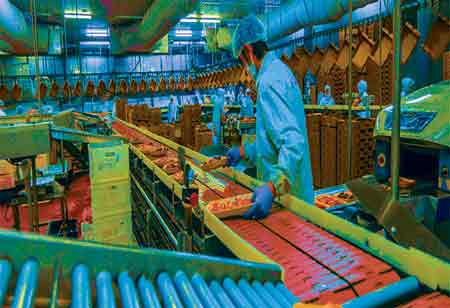Thank you for Subscribing to Food Business Review Weekly Brief
Importance of Vegetable Oil in Bakery Products
With a worldwide consumption of more than 200 million tons, vegetable oils, which form the essential building blocks of all the foods people consume, from the treats people consume to the basic food bread to the vegan dairy industry, is among

By
Food Business Review | Wednesday, April 12, 2023
Stay ahead of the industry with exclusive feature stories on the top companies, expert insights and the latest news delivered straight to your inbox. Subscribe today.

Bakeries' main ingredient is vegetable oil. They immediately affect the vital parameters of the items they prescribe, such as structure, melting profile in the tongue, flavor, and shelf life; thus, using the proper oil for the application is crucial.
FREMONT, CA: With a worldwide consumption of more than 200 million tons, vegetable oils, which form the essential building blocks of all the foods people consume, from the treats people consume to the basic food bread to the vegan dairy industry, is among the world's most essential food commodities.
The country's annual vegetable oil consumption surpasses 2 million tons, the majority of that being Sunflower oil. More than fifty percent of the oil consumed within the country's borders is still sunflower oil. One of the nation's most important goods, olive oil, is selling at 140,000 tons per year, but consumer demand for packaged and table margarine is down to 110,000 tons from 120,000 tons due to negative trends in recent years.
Utilization of vegetable oil in baked goods
Vegetable oils are the essential ingredient in producing various types of baked goods. They directly influence the critical parameters of the products they prescribe, such as structure, dissolving profile in the mouth, flavor, and shelf life, making it crucial to use the correct oil for the application.
Before understanding the effects of oils, it is necessary to have a general comprehension of oil technology. In order to accomplish the desired properties in the final application, factories modify and blend raw materials based on their melting profiles, crystallization behaviors, and stability, as determined by research and development teams. This mixture undergoes a refining process and is purified. According to the intended functionality, emulsifiers, antioxidants, etc., are added to the refined mix; if it is margarine, water is added. This final mixture is crystallized and packaged in surface scraper heat exchangers to establish the crystal structure, the essential factor in selecting the structure of baked goods. Since variations in parameters such as the cooling profile, capacity, and scraping speeds used in this process will convert even identical prescriptions into different structures, they are determined by R&D teams through repeated testing in experimental facilities and applied precisely by production teams. Some products are delivered after undergoing a period of controlled temperature tempering following production.
Palm, a fruit oil, is an ideal raw material for this region due to its melting profile and inherent stability. They construct an application-appropriate recipe by modifying palm oil and its derivatives or blending directly with liquid oils such as sunflower, cotton, and canola.
In the traditional market, the most popular products are general-purpose pastry lipids. There are versions of margarine with various proportions of water and full-fat versions. They are used between 20 percent and 30 percent of baked goods such as pastries, cookies, cakes, etc. These oils are formulated to maintain their structure at room temperature without causing a waxy sensation in the mouth by rapidly melting at body temperature. At this juncture, the concept of SFC arises; "Solid Fat Content" is the most important parameter of vegetable oils. The SFC value of oil at a given temperature indicates the percentage of solid oil. Measuring this value at various temperatures reveals the melting profile of the final product and how it will behave at different temperatures.
In addition to the SFC profile, the crystal structure of the oil is an important factor. In conjunction with flour and other ingredients, the crystal structure formed during production should be able to form a matrix. Therefore, it must have a flexible, plastic structure that does not shatter when bent. This structure retains the water in the dough, which increases the product's volume through evaporation. If this crystal structure is not accomplished, a weak matrix forms in the dough, the oil cannot provide sufficient lubrication, and a dough structure known as dough rubbering forms. The intended density and texture cannot be achieved in the final product. In the images below, on the left is a product that retains its plastic structure and flexibility when correctly crystallized, and the bend can be seen; on the right is a fragile product that has been incorrectly crystallized, and products made from the fragile product will not have the desired structure and volume.
The oxidative stability of the oil, i.e., the rate at which it becomes bitter over time, is also a crucial parameter in terms of performance and flavor. If the oil in the final product becomes bitter, the ultimate consumer will notice. It must first be designed appropriately with high-oil-stability raw materials; if this is not technically feasible, it must be supplemented with antioxidants, stored under suitable conditions; and not exposed to direct heat when in use. As the saturated fatty acid content of the oil rises, palm oil derivatives and hydrogenated versions display the utmost stability.






